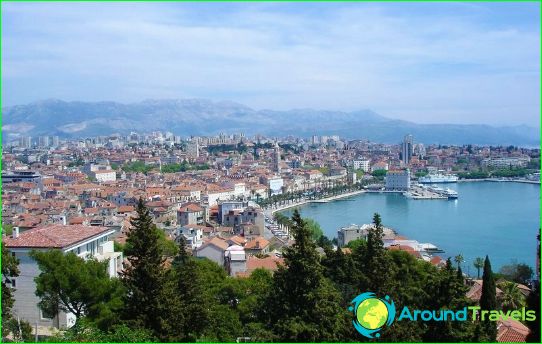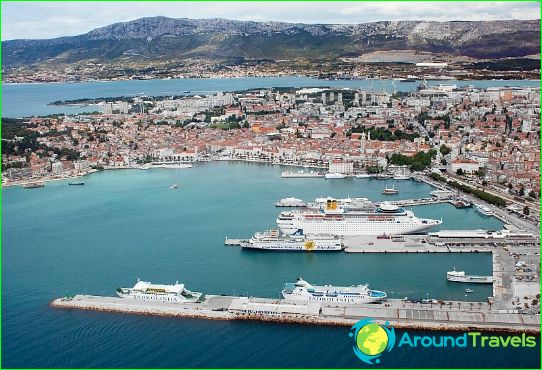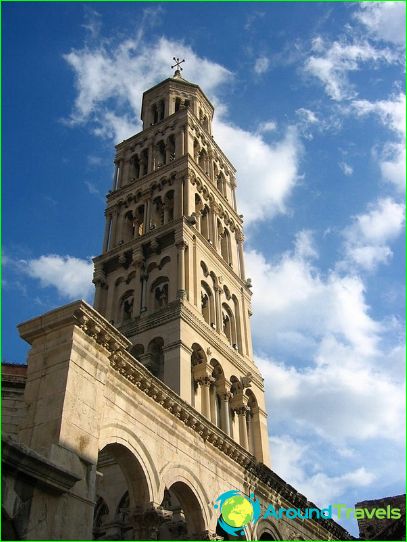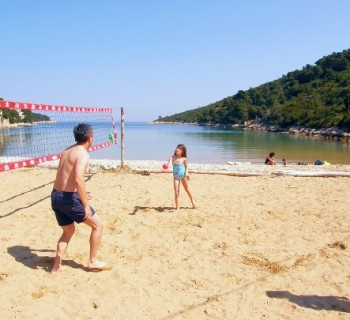Split history

Split is the second largest city in Croatia and one of the oldest cities in Europe. Today, Split, located on the Adriatic coast, is a popular tourist destination and an important transport hub..
Antique times
In the 4th century BC. on the site of Split there was a small ancient Greek settlement Aspalatos or Spalatos. By the end of the 3rd century, the Romans firmly settled in the region, having founded their province of Dalmatia here, the administrative and economic center of which became the Salona located near Aspalatos (the ruins of the ancient Roman Salona can still be seen in the suburb of Split - the town of Solin). The further fate of Aspalatas is unknown. It is possible that, against the background of the flourishing Salona, Aspalatas was gradually abandoned, although no reliable data was found to confirm this version..
Around 300 A.D. The Roman emperor Diocletian ordered to build a luxurious palace on the shores of the picturesque bay (where ancient Aspalatos was once located), planning to settle in it after his retirement. The work was completed in 305, and it was from this time that modern Split officially began its history, the heart of which actually became the palace complex of Diocletian. Today, Diocletian's Palace is the hallmark of Split, and perhaps the best preserved and most impressive example of palace architecture from the Roman period..
After the collapse of the Roman Empire, Dalmatia came under the control of the Western Roman Empire, and after it ceased to exist, the region was dominated by the Goths for some time. However, already in 535-536. Dalmatia was again in the power of the Romans, or rather the Eastern Roman Empire, better known in history as Byzantium.
Middle Ages
In the 7th century, Salona was plundered and actually destroyed as a result of the invasion of the Avars and Slavs. Some of the inhabitants were killed, some escaped by sea and hid on the nearby islands, and the rest hid behind the walls of the old palace of Diocletian. The salon was never restored, and its former residents, who later decided to return to the mainland, also settled outside the palace walls. The population grew steadily, and soon the boundaries of the city expanded significantly, going far beyond the palace..
In the 10th and 11th centuries, most of Dalmatia was part of the Kingdom of Croatia. Split and several other coastal cities and islands de jure belonged to Byzantium, while experiencing a huge influence from Croatia, which naturally could not but affect the cultural development of the city. Split remained under Byzantine rule (except for a short period in the early 11th century, when the city was voluntarily under the Venetian protectorate) almost until the end of the 11th century, after which it came under the control of the Venetian Republic. By this time, Croatia and Hungary entered into a personal union and, of course, had certain views on the promising Split. Around this time, a long struggle for Split begins between the Hungarian kings and the Venetian Doges. At the beginning of the 12th century, Split recognized the supremacy of the Hungarian-Croatian crown, while maintaining autonomy. Over the next centuries, the city actively developed and flourished..
At the beginning of the 15th century, the Hungarian king sold Split to Venice and the city lost its independence. During the reign of the Venetians, Split was thoroughly fortified as an important trading port. Despite numerous attempts at capture by the Turks, Split remained part of Venice until 1797. The Venetian era had a huge impact on the development of the city, making it not only an important trade and economic center of the region, but also a major cultural center..
New time
In 1797, after almost four hundred years of Venice's rule, Split came under Austrian rule. In 1806, during the Napoleonic Wars, Split came under the control of the French, but already in 1813 it returned to Austria, in which it remained until 1918, after which it became part of the Kingdom of Serbs, Croats and Slovenes (since 1929 - the Kingdom of Yugoslavia, and since 1945 - the Federal People's Republic of Yugoslavia).
During the Second World War, Split was occupied by Italian troops and was repeatedly bombed. The post-war period for Split was a period of economic and demographic boom, as well as large-scale industrialization..
By the time Croatia proclaimed independence in 1991, a fairly impressive garrison of the Yugoslav People's Army was based in Split, which resulted in a long and tense confrontation. The climax was the bombing of the city by a Yugoslav warship. «Split». As a result, in the 90s, Split's economy experienced a sharp decline, but by 2000 it had recovered, and the city began to develop..







